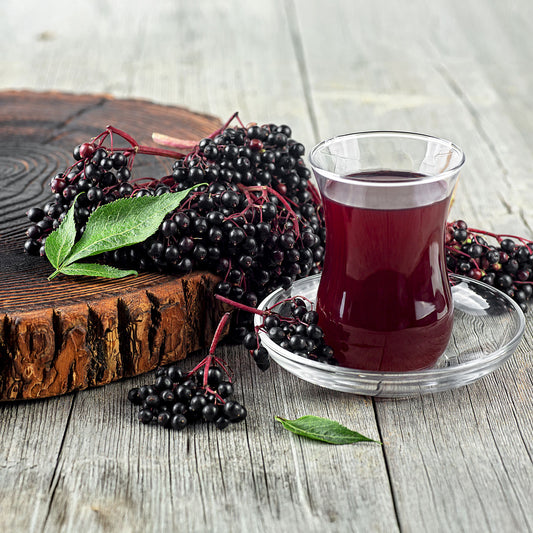4 Nutrients Most Americans Lack…

I came across an article1 from the Harvard Health Blog that details four nutrients most Americans lack.
Now, I know our readers are much, much healthier than the average American. But hey, there’s nothing wrong with making sure you’re checking every box.
And these four nutritional deficiencies were identified by the US Department of Health and Human Services and considered “dietary components of public health concern.”
Without further ado, here are the big four:
1. Calcium
Thanks to milk advertisements, we all know you need calcium to build and maintain strong bones, which is especially important as we age. Calcium also plays a role in heart health, muscle function, and nerve signaling.
Where to find it? Cheese
- Yogurt
- Milk
- Beans
- Lentils
- Seeds
- Almonds
- Spinach
- and Kale.
Click here2 for a more comprehensive list.
2. Potassium
Less than 2% of Americans get enough potassium, and 90% of Americans get too much sodium...why is this important?
Well, these two minerals are critical for healthy fluid balance - and several studies indicate that consuming more sodium than potassium is a strong indicator of increased risk of cardiovascular problems.3
Potassium acts as a ‘vasodilator’ - meaning it helps relax and widen blood vessels, which can lower blood pressure and help get more oxygen to your muscles and brain.
Harvard Health Publishing said the following:
“When it comes to fighting high blood pressure, the average American diet delivers too much sodium and too little potassium. Eating to reverse this imbalance could prevent or control high blood pressure and translate into fewer heart attacks, strokes, and deaths from heart disease.”4
Where to find it?
- Potatoes
- Avocados
- Banana
- Spinach
- Coconut water
- Squash
- Yogurt
- and Beans.
Click here5 for a more comprehensive list.
3. Dietary Fiber
Fiber is often described as a “broom” for your intestines. It passes through your digestive system relatively intact, soaks up water, expands like a balloon, and adds bulk to stool so it can pass more comfortably and more completely.
Additionally, fiber supports healthy cholesterol levels, blood sugar levels, and even helps keep you full so you don’t overeat.
Where to find it?
- Whole grains
- Vegetables
- Fruits
- Beans
- Nuts
- and Seeds.
Click here6 for a more comprehensive list.
4. Vitamin D
Known as “the sunshine vitamin,” Vitamin D is estimated to be involved in the regulation of up to 2000 genes and almost every bodily process under the sun, supporting healthy bones, a healthy heart, muscles, mood, immunity, and more.
Vitamin D acts more like a hormone than a vitamin because the body can actually synthesize it from UVB rays and cholesterol.
According to a robust survey of 4,495 people, 41.6% of adults in the US were deficient in Vitamin D.7
Luckily, you don’t need that much sun to maintain healthy Vitamin D levels, just 10 to 30 minutes three times a week is likely enough. Any extra Vitamin D your body doesn’t need gets stored in fat to use later.
If getting some sun isn’t an option, some Vitamin D-rich foods are:
- Salmon
- Shrimp
- Egg yolk
- Cheese
- and foods fortified with Vitamin D (typically stated on the label)
REFERENCES:
- Solan, Matthew. “4 Essential Nutrients - Are You Getting Enough?” Harvard Health, 16 Mar. 2021, www.health.harvard.edu/blog/4-essential-nutrients-are-you-getting-enough-2021031622124.
- “A Guide to Calcium-Rich Foods.” National Osteoporosis Foundation, 20 May 2020, www.nof.org/patients/treatment/calciumvitamin-d/a-guide-to-calcium-rich-foods/.
- “Sodium/Potassium Ratio Linked to Cardiovascular Disease Risk.” National Institutes of Health, U.S. Department of Health and Human Services, 18 Mar. 2016, www.nih.gov/news-events/nih-research-matters/sodium/potassium-ratio-linked-cardiovascular-disease-risk.
- “Potassium Lowers Blood Pressure.” Harvard Health, 24 Sept. 2019, www.health.harvard.edu/heart-health/potassium-lowers-blood-pressure.
- “High Potassium Food List - Foods Rich in Potassium.” Drugs.com, www.drugs.com/cg/potassium-content-of-foods-list.html.
- “FIBER IN FOODS CHART.” Michigan Medicine - University of Michigan, www.med.umich.edu/mott/pdf/mott-fiber-chart.pdf.
- WL;, Forrest KY;Stuhldreher. “Prevalence and Correlates of Vitamin D Deficiency in US Adults.” Nutrition Research (New York, N.Y.), U.S. National Library of Medicine, pubmed.ncbi.nlm.nih.gov/21310306/.




